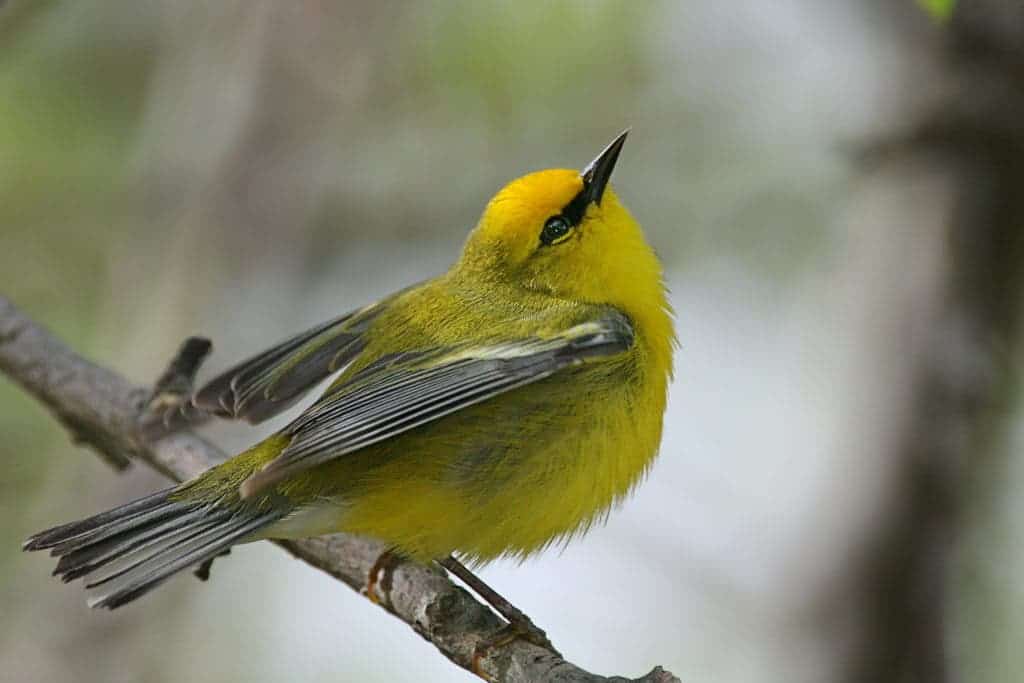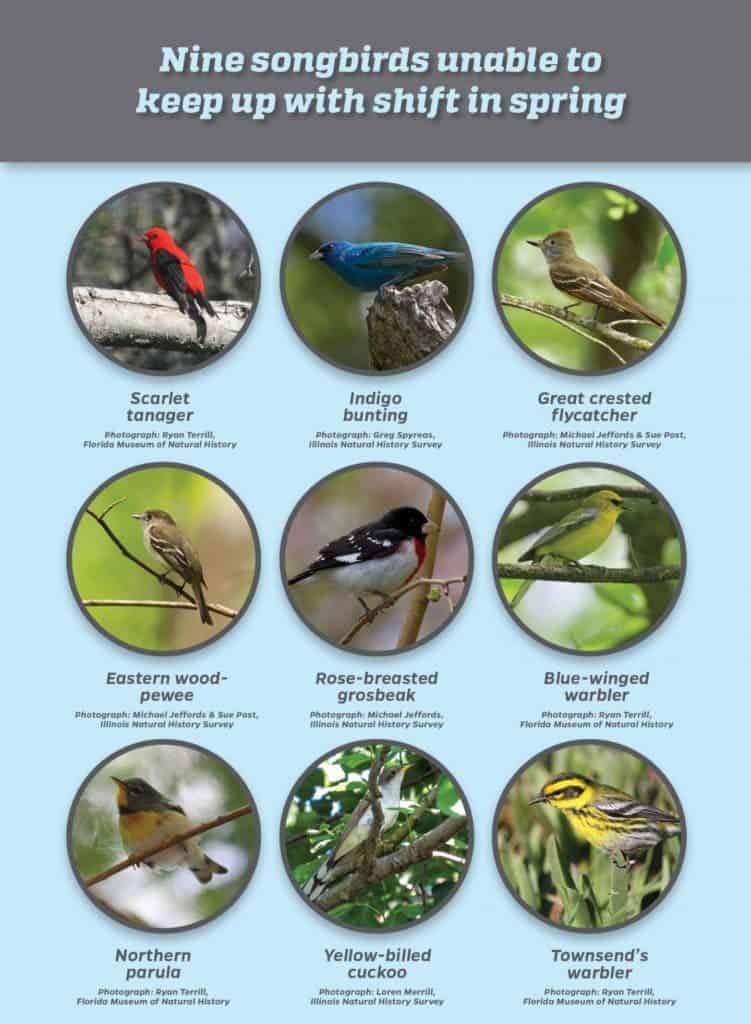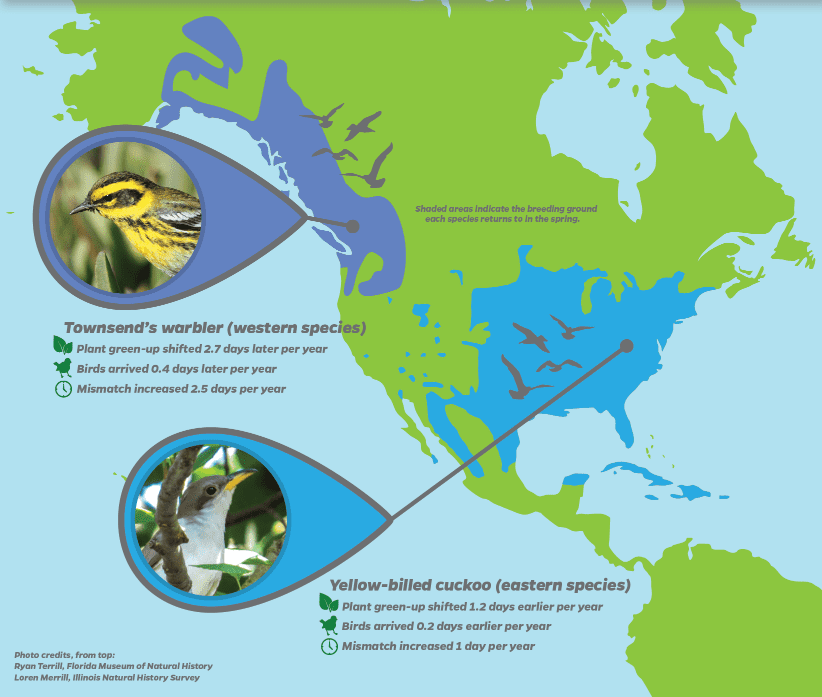You can add “wrecking the schedule of our favorite birds” to the list of negative effects of climate change. A new study has shown that the onset of spring is being significantly shifted due to global warming, and this is having a negative effect on migratory birds.

Timing is vital for migratory birds. Get home too early, and you’ll face a hostile winter chill with little to no food. Get there too late, and the insect buffet is closed, and all the good nesting places have been taken. It’s important to assess when spring starts so that they have a good chance to survive, especially because spring is generally the most important breeding season and birds need the extra resources during this delicate time. They’re generally pretty good at that — or they used to be.
“It’s like ‘Silent Spring,’ but with a more elusive culprit,” said Stephen Mayor, a postdoctoral researcher with the Florida Museum of Natural History at the University of Florida, referring to the groundbreaking book which revealed many wrongdoings of the chemical industry.
“We’re seeing spring-like conditions well before birds arrive. The growing mismatch means fewer birds are likely to survive, reproduce and return the following year. These are birds people are used to seeing and hearing in their backyards. They’re part of the American landscape, part of our psyche. To imagine a future where they’re much less common would be a real loss.”

In many areas, warming temperatures are triggering plants to begin their growth earlier or later than normal, thus triggering a domino effect which skews biological cycles that have long been in sync.
Migratory birds in Central and South America take their migratory cues from seasonal changes in daylight, which stay similar from year to year. So they have a fixed timeline. However, the world around them doesn’t.
Global warming is pushing flowers to bloom earlier (or in some rare cases, later). Since these plants lie at the bottom of the food chain, they pretty much support the entire ecosystem. If they start to bloom earlier, the entire ecosystem has to adapt to them… and that’s just not happening.
“If anything could adapt to climate change, you’d think that birds that migrate thousands of miles could,” Mayor added. “It’s much easier for them to move in response to climate conditions than salamanders, for example, or trees. But because every species relates to another, one of our fears is that climate change can disrupt these relationships between organisms such that their critical life events are not timed optimally, putting them at risk.”
The team combed through data on 48 bird species across North America, using data from satellites and citizen scientists to correlate between spring plant growth and the arrival of the birds from 2001 to 2012. Although this was a regional study, there’s no reason to believe things are different in other parts of the world.

The team emphasized the importance of birding (bird watching), which has started to pick up a lot of popularity in recent years. Basically, bird watchers represent the backbone of this study.
“As more and more birders record their observations, they are creating a density of data that allows us to start from a continental level and zoom down further and further to the ground,” Guralnick said. “It’s powerful. Whether they know it or not, birders are helping scientists do their work, and they could end up helping birds in the process.”
Nine species were clearly unable to keep up with the shift: great crested flycatchers, indigo buntings, scarlet tanagers, rose-breasted grosbeaks, eastern wood-pewees, yellow-billed cuckoos, northern parulas, blue-winged warblers and Townsend’s warblers. The rest also struggled to adapt. The rate of change is alarming, but scientists report that birds are already starting to shift some of their life events to keep up with these climatic changes. It remains to be seen whether they will be successful.
Journal Reference: Stephen J. Mayor, Robert P. Guralnick, Morgan W. Tingley, Javier Otegui, John C. Withey, Sarah C. Elmendorf, Margaret E. Andrew, Stefan Leyk, Ian S. Pearse, David C. Schneider. Increasing phenological asynchrony between spring green-up and arrival of migratory birds. Scientific Reports, 2017; 7 (1) DOI: 10.1038/s41598-017-02045-z


